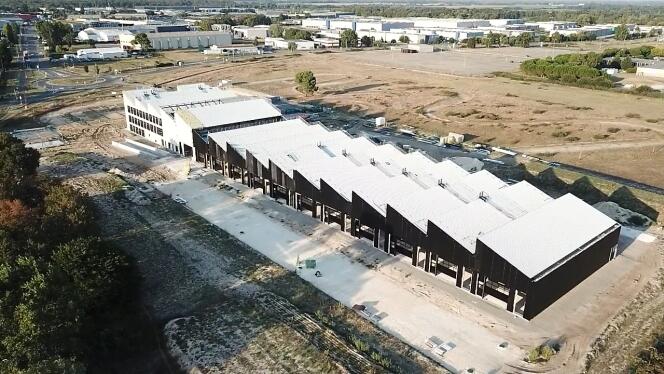Not dissatisfied with the symbol, Damien Havard shows the sheds of its future factory. Sawtooth roofs, typical of the industrial revolution of the 19th centurye century, to let the light of day pass through. The company Hydrogène de France (HDF Energy) – a private company, contrary to what its name would suggest, whose founder holds a little less than half of the shares – will soon settle in this long rectangle already nearing completion. . Completion of the project expected for January 2024, less than a year after the first stone.
Here we are in the middle of a wasteland in Blanquefort (Gironde), in the suburbs of Bordeaux, but not quite anywhere. This wasteland, known as circuits, formerly belonged to the American group Ford. The car manufacturer was carrying out tests for its gearboxes there. The metropolis of Bordeaux then recovered it, then sold around a third of it to Hydrogène de France.
The Ford Aquitaine Industries factory, closed in 2019 on a plot not far away, has now disappeared. Destroyed almost half a century after its inauguration in 1973. “this superb ship”, as Jacques Chaban-Delmas, then mayor of Bordeaux, called it, nothing remains. If it is not a vast area to be decontaminated – before a possible “industrial village”, according to the real estate group Axtom. A neighboring factory still exists, from which the American firm withdrew in 2021. It is in the portfolio of the German investment company Mutares.
A technology at the promising stage
Opposite, Hydrogène de France will have 7,000 square meters. Part for its administrative offices (which are currently located in Bordeaux), an even larger part for what will be the main activity: the series assembly of high-power fuel cells, in a hall without pillars, in principle from the second quarter of 2024. “Even if we do not yet have any firm orders from external customers”projects “already exceed capacity” of the site, assures Mr. Havard. Projects primarily intended for export.
These giant batteries, once in 12 meter long containers, will be able to power power stations. They carry with them the promise of finally storing renewable energies such as wind or solar power, to convert them into low-carbon hydrogen. “Energy being a very political subject, we are already required to deal directly with the governments of the countries where we want to develop”, continues the entrepreneur. In addition to the French region of Guyana, several states are interested: Barbados, Indonesia, Namibia and South Africa, which intends to gradually move away from coal.
You have 48.13% of this article left to read. The rest is reserved for subscribers.
